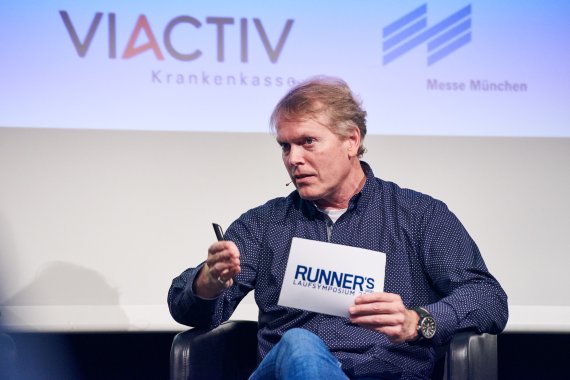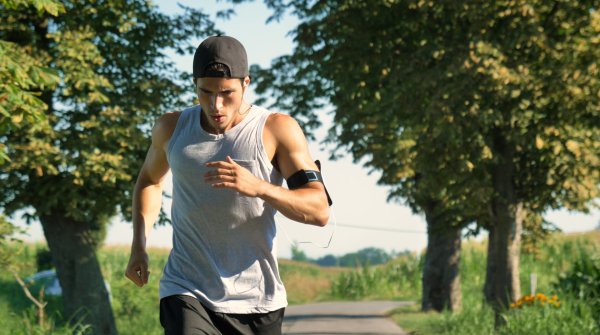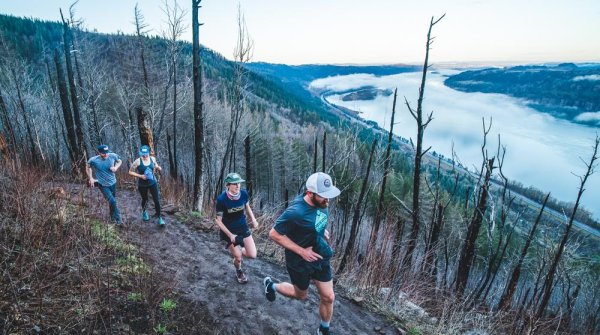
Urs Weber starts in 1968, which may be surprising at first sight especially because running expert Weber is mainly contemporary and future-oriented. He quickly explained why he introduced the 7th Runner's World Running Symposium at ISPO Munich at his time and with a picture of the merchant ship American Liberty in the port of Hamburg and the first personal computer. 1968 was the year when running became a health sport. The broad masses began to run.
"The running segment was long time in Sleeping Beauty sleep. It has only really developed in the last five years," says Weber. As editor of Runner's World, the largest magazine in the running community, he has witnessed the change at close quarters. The magazine reaches about 250,000 readers per issue. "It's an incredibly exciting time right now with many innovations from completely new directions such as biomechanics."
Gold Winner of ISPO Award 2020 was fittingly named the Veja shoe, whose production uses as little fossil fuel as possible. Instead raw materials such as natural rubber, rice waste, banana oil, sugar cane, castor oil and natural latex are used. And the big players like Under Armour are now connecting smartphone, Smartwatch and footwear via computer chips in their running shoes. To analyse the running style but also to make runners better via tracking and app.
In addition Weber has already counted seven new running shoe brands this year and twelve manufacturers are already launching carbon plates in the midsole. A market, by the way, which is growing and lives from hobby and leisure runners.
According to a survey, Runner's World readers run an average of 37 kilometres per week. However, the vast majority of these run less than 40 kilometres. 82 percent of the approximately 8000 users took part in a running competition last year. The main interest of the runners is the distances up to the half marathon. In contrast, interest in marathons is declining slightly in the main target group (from 2017, 38 percent to 35 percent).
The enthusiasm for road running, which clearly dominates (85 percent) among the competition courses, remains unchanged, followed by trail runs (34 percent) and company runs (28 percent). Compared to the previous year, the interest in the competitions has increased in each case.
By almost ten percent the average spending on running clothes also increased up to 324 euros per person per year. After a declining previous year, runners are now spending significantly more money on their clothes again. "The good news for manufacturers is also", says Weber, "that users have an average of six pairs of shoes."
And where does the target group buy running shoes?
- Specialist running shop (85 percent)
- Internet (68 percent)
- Specialist sports shop (67 percent)
- Department store/sports department (22 percent)
- Catalogue (5 percent)
- Supermarket/discounter (2 percent)
So the retailers are still the number one among the running athletes. This shows above all that owning your own small test tracks in the shops and getting advice on site can be really worthwhile.
Health also plays a major role in running and the spirit of 1968 is alive. According to a survey, 57 percent of Runner's World readers are particularly interested in healthy nutrition and lifestyle. The Sleeping Beauty sleep in running is over.
- Awards
- Mountain sports
- Bike
- Fitness
- Health
- ISPO Munich
- Running
- Brands
- Sustainability
- Olympia
- OutDoor
- Promotion
- Sports Business
- Textrends
- Triathlon
- Water sports
- Winter sports
- eSports
- SportsTech
- OutDoor by ISPO
- Heroes
- Transformation
- Sport Fashion
- Urban Culture
- Challenges of a CEO
- Trade fairs
- Sports
- Find the Balance
- Product reviews
- Newsletter Exclusive Area
- Magazine







